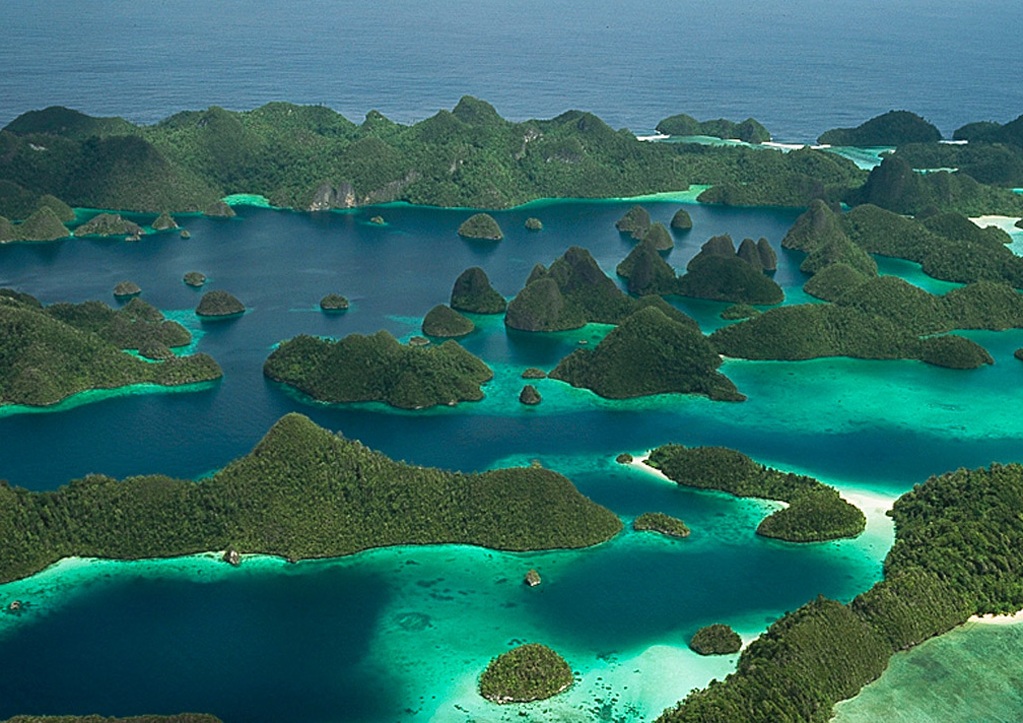 Although many people tend to think of Indonesia as a relatively small country, it is actually the fourth largest in the world with a territory that covers over 17,000 individual islands. As you would expect in such a large country, there are many different cultures, languages and unique places to visit in Indonesia, and it has a wealth of natural attractions for visitors to the area. The country still shows traces of colonial times, but the natural spots in the country remain largely untouched, although some places are under threat from the increasing industry of the country.
Although many people tend to think of Indonesia as a relatively small country, it is actually the fourth largest in the world with a territory that covers over 17,000 individual islands. As you would expect in such a large country, there are many different cultures, languages and unique places to visit in Indonesia, and it has a wealth of natural attractions for visitors to the area. The country still shows traces of colonial times, but the natural spots in the country remain largely untouched, although some places are under threat from the increasing industry of the country.
Bunaken National Park
One of the most interesting and beautiful natural sites in Indonesia is the tropical area in the BunakenNational Park, where hundreds of species of coral and rare fish and marine life can be found. Within the park there are five islands that are home to around 35,000 people, but the majority of visitors will want to visit the reefs in the waters around the island to view the coral and the marine life.
Unfortunately, the development of a tourist industry based around diving is actually harmful to the sensitive ecosystem in the park, which is now protected by its UNESCO status and has conservation support from the World Wildlife Fund. Over seventy per cent of the marine life in this part of the Pacific can actually be found in the national park, including the beautiful Emperor Angelfish and the Bluestripe Snapper.
Raja Ampat
Another of the important sea marine parks in Indonesia is to be found in the waters off the Raja Ampat islands, and the coral population here rivals that to be seen in Bunaken. The islands themselves are made up of four main islands and around 1,500 smaller isles to be found around the area, and because it is very remote the area is still relatively untouched by human visitors. Because of the remote and isolated nature of the islands, they are generally occupied by lots of small tribes, with the main industry being fishing.
The area is slowly being opened up as a potential dive spot due to its largely untouched quality, and along with a huge variety of fish there are also massive schools of fish to be found in the area.
Gunung Leuser National Park
Along with the amazing sea-based sites that can be visited in Indonesia, there are also some truly amazing areas on land, and the GunungLeuserNational Park is certainly one of these. It’s location on the mountainous islands of Sumatra make this National Park one of the most important for its population of native species such as the Sumatran Rhinoceros and the Sumatran Elephant.
Although visiting the area is quite difficult due to the steep mountain landscape and isolated location, one of the real highlights is the Bukit Lawang Orangutan Sanctuary. There are over 5,000 orangutans to be found across the island, and the sanctuary is a great place to get a better look at these reclusive primates.
Mount Bromo
One of the most interesting natural visitor attractions in Indonesia is actually a live volcano, although eruptions in 2010 and 2011 have been recorded. As a part of the BromoTenggerNational Park, this active volcano can be reached by a short hike from a nearby mountain, or there are special excursions by jeep to an observation point. The volcano is constantly monitored by vulcanologists, and there are sometimes warnings against visiting the area.
Komodo National Park
Another of the important natural locations is the KomodoNational Park, which covers three larger islands and twenty six smaller islands. The main island of Komodo gave its name to the world’s largest lizard, which is the Komodo Dragon. It is this reason that has led to the area being declared an UNESCO World Heritage Site.
As well as the population of Komodo Dragons to be found on the islands in the park, there are also significant numbers of marine species to be found in the seas around the islands. This has led to the national park becoming a popular destination for scuba diving, although there is a big emphasis on maintaining the integrity of the ecosystem in this type of tourism.